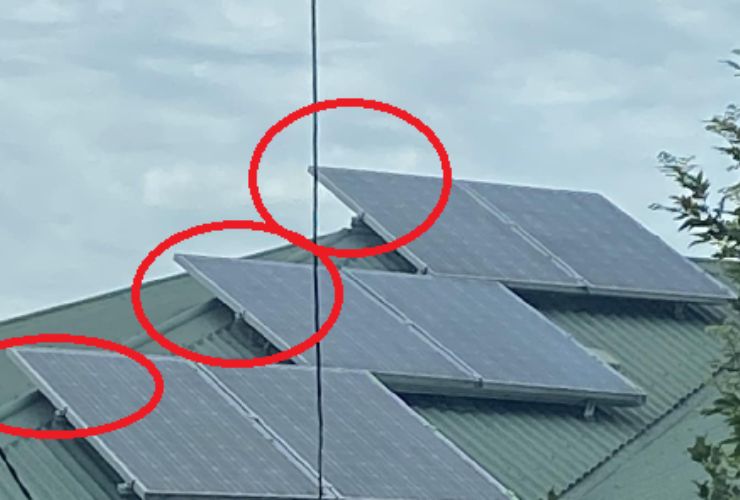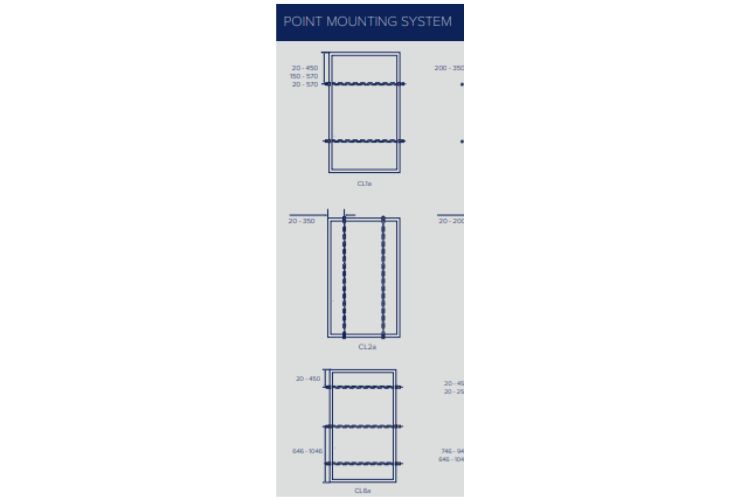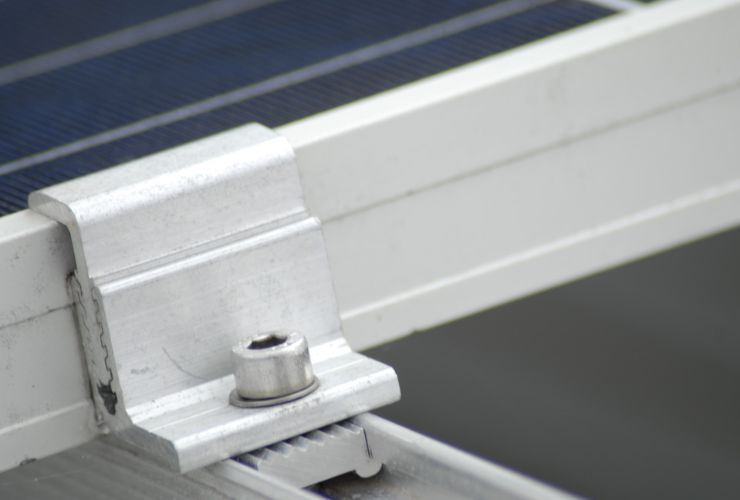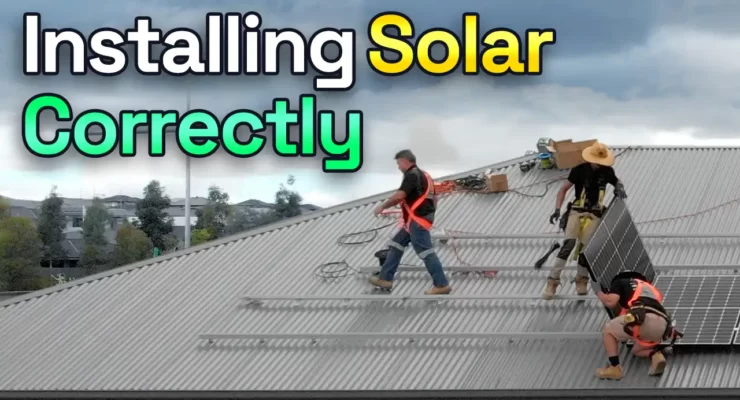Fast read
Clamping zones are crucial for solar panels, ensuring they are safely secured and function optimally. Incorrect clamping can cause panel damage due to wind or snow-induced flex, which can lead to microcracks, decreased performance, or even fires.
Improper clamping voids the warranty and may not meet load requirements essential for a panel's lifespan. Australian standards specify wind regions and load ratings. While bolting is an alternative to clamping, it's mainly suited for solar farms due to Australian solar standards.
If clamps are outside the designated zone, it may strain weaker parts of the panel, risking instability and cell damage. Always choose a reputable installer and understand your clamping zones to ensure the longevity and safety of your solar system.
Are Solar Panel Clamping Zones Important?
In Australia, the standard method for mounting solar panels to the roof of a home involves using a railing and clamping zone system. In this system, solar panels are placed across two, or sometimes three, aluminium rails. Four or six clamps, fixed to the rails, then secure the panels by clamping down on their framed edges.
All solar panels come with guidelines for clamping or securing them to the mounting system, both for safety—preventing them from coming loose or blowing away—and for functionality. The clamping zones need to be in the correct position on the panels so that they do not flex under the force of wind or snow. This can damage the solar cells, causing microcracks, loss of performance, hot spots and failure or fire.
The photo below shows the top clamps highlighted, which are too far down the panel. This leaves too much of the panel above the highest fixing point, which will create significant flex from high winds and lead to damage to the cells and likely shattering of the glass and hotspots/panel failure over time. Additionally, these panels are also going over the ridge of the roof. This is also outside the allowable installation zones.

What should worry me?
Apart from increasing the risk of damage from excessive forces, including wind load, clamping in the incorrect positions on the panel will also void the warranty on the panel itself. As such, ensuring the correct clamping zones on the panel is vital.
The clamping range of the solar panels varies slightly between manufacturers, and you can confirm it through the installation manual. Panel manufacturers usually provide this manual, though some offer only a single option for clamping or mounting the solar panels. At the same time, others can offer different clamping zone options and positions.

The image above shows three common clamp mounting positions that can be used for the Qcells panels, with the distances of each zone in mm. The table shows the test and design loads that apply to each position for first-panel mounting positions indicated as C1a. Each of the different positions has a different level of load that the panel will be suitable to absorb for each position indicated.
If the panel is clamped outside of that zone, then it will not meet the respective load requirements. The clamping position and the design load that applies to that position must match the load rating (wind or snow) load for the location of your home. Ensure the clamping method and position are strong enough to handle the loads they will experience.
What if I’m in a windy area?
The wind regions and requirements for load rating for the clamping zones are defined by Australian standards AS1107.2. Among the various wind zones, Cyclone Zones C and D are of particular significance due to their vulnerability to severe tropical cyclones. These zones predominantly cover the coastal areas of Northern Australia, including regions in Queensland, Western Australia, and the Northern Territory. Given the extreme weather conditions cyclones bring, architects and builders need to design structures in these zones with robustness and resilience.
Specific load ratings for clamping zones play a pivotal role in ensuring the stability and safety of these structures. According to AS1107.2, clamping zones in high-wind areas like Cyclone Zones C and D must meet stringent strength and durability requirements to withstand the wind forces specific to their region. These load ratings dictate the minimum standards for clamping materials and connections, ensuring they can endure the expected wind pressures and maintain structural integrity.
Adhering to AS1107.2 standards offers multiple benefits. Firstly, it enhances safety by ensuring that structures are capable of withstanding the prevalent wind forces and minimizing the risk of structural failure during extreme weather events. Secondly, compliance with these Australian Standards is mandatory for all construction projects, helping to avoid legal complications and ensuring regulatory compliance. Lastly, these standards usually ensure structures have a longer lifespan because designers focus on durability, resilience, and the unique challenges of the Australian climate.
Bolting
Many people don’t realise that you can bolt solar panels. Typically, this installation process is used in solar farms where a ground-mounted solar panel system is desired.
You can use bolts for this system type because you have plenty of access to the back of the solar panels, whereas with solar panels installed on a roof, you have to lay them flat and accessing the back is not easy at all. Another reason bolting is only common for solar farms and ground-mounted solar systems is the Australian solar standards.
These standards require a minimum gap of 5cm between your roof and solar panels. Since your average solar panel is 5cm thick, it is difficult to bolt a panel to your roof without direct precision and skill. For these reasons, clamping is the most common method when installing your solar panels.

What if there are clamps in the no-clamping zone?
Let’s say you are inspecting your panels and notice that your clamps are located outside their designated clamping zone.
If you can, go and inspect your solar panels yourself and if you notice four different clamps installed symmetrically. These clamps that are located outside of the clamping zone are just providing your system with extra security.
However, if you inspect the panels and find fewer than four clamps, it means someone installed one or two clamps outside the designated clamping zone. This poses an issue for your panel because it places extra stress on the weaker portions of your solar panel. This can cause the panel to be unstable, and issues with the solar cells can occur in severe weather.
In Summary
Overall, by choosing a quality local solar installer, this issue should never arise. Please ensure you know what clamping zones are before you get a solar system so you can ask your installer questions that you should expect them to answer. You should expect a minimum of four clamps in the most secure zones of the solar panels if you are in an area with severe wind conditions.
Ideally, you will want each panel in your system to have a clamp in each of its four zones or the four most secure zones if it has more than one type and additional clamps. These extra clamps can be located outside of clamping zones without a problem. The next best situation would be one clamp in a solar panel’s four most secure zones.



